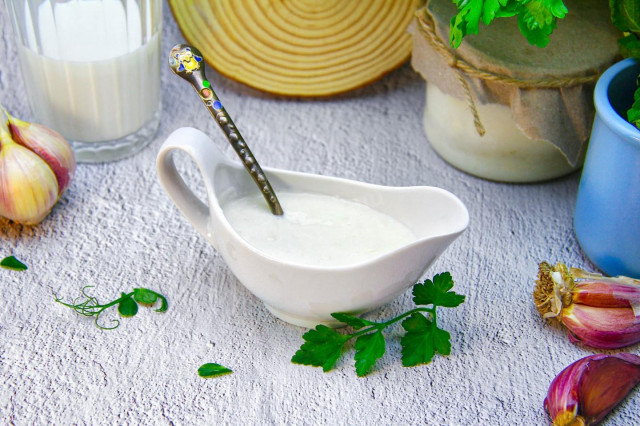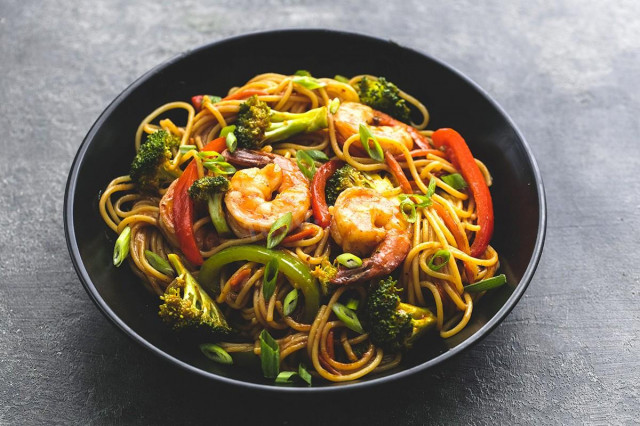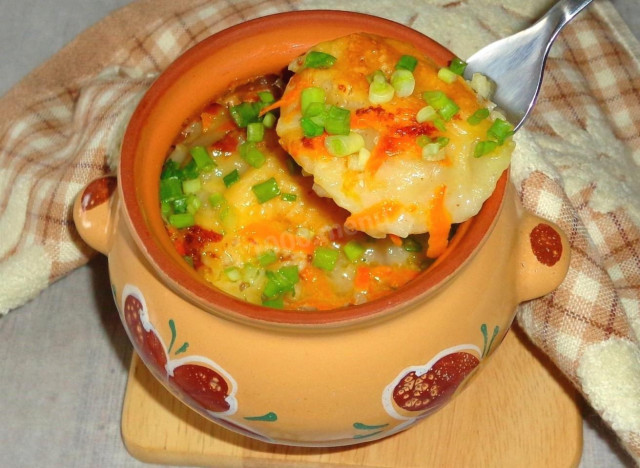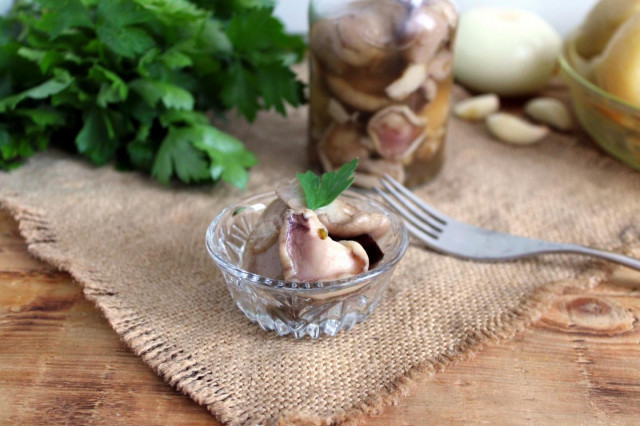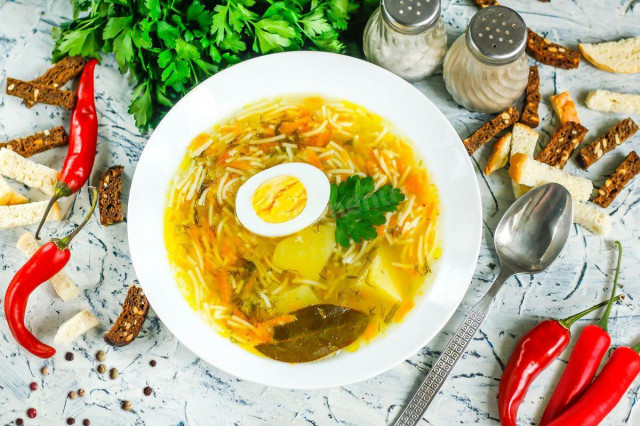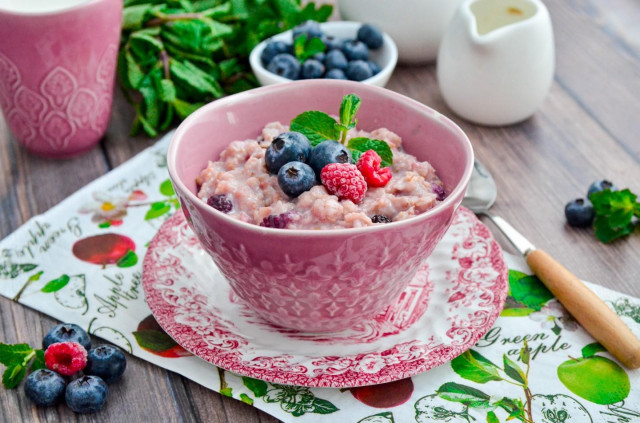Composition / ingredients
Step-by-step cooking
Step 1:

How to make white cream sauce? First of all, melt the butter. Transfer a piece of butter to a small ladle or saucepan with a thick bottom. Melt the butter to a liquid state over low heat. In order for the butter to melt faster, you can pre-cut it into small pieces.
Step 2:
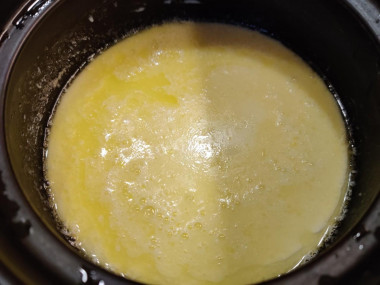
Add cream to the butter in a saucepan. Cream for this recipe can be of any fat content, but remember that the higher their percentage, the higher the calorie content of the dish will be. For sauces, I use 20%. Mix the butter and cream thoroughly and cook the mixture for about seven minutes over low heat, stirring it constantly with a cooking spatula.
Step 3:

Then add a garlic clove grated on a fine grater to the sauce. Season the sauce with salt and pepper to taste. Add a sprig of fresh rosemary. Rosemary can also be dried. Then it needs about a quarter of a teaspoon. But in general, you can add to the sauce those seasonings that you like.
Step 4:
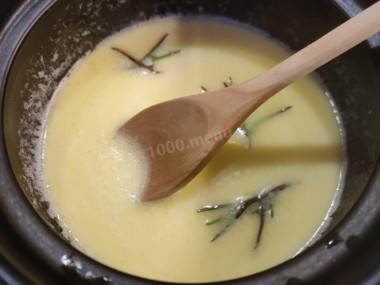
Simmer the sauce for another couple of minutes with constant stirring. You do not need to cover the saucepan with a lid.
Step 5:

The sauce should thicken slightly and become more stringy. After cooling, the sauce will become even thicker.
Step 6:

Since this sauce is prone to the formation of a dense crust on the surface during the cooling process, it is usually not stored, but prepared immediately before serving. If it is not intended to use the sauce immediately, I recommend covering it with cling film in contact. In contact means to tightly lay the film directly on the surface of the sauce to block the access of air to the saucepan.
If pasta is supposed to be served with this sauce, then I recommend putting water for it to boil at the same time as the sauce is being prepared. Thus, both components of a delicious lunch will be ready almost simultaneously.
You can add any vegetable or meat filler to pasta with this sauce. Mushrooms, cherry tomatoes, chicken. Yes, whatever your heart desires. The sauce will be a great addition to the meal and a link between all the ingredients.
Or you can simply add grated parmesan to the pasta with this sauce and pour yourself a glass of Sauvignon Blanc. Bellissimo!
In addition to the banal serving with pasta, this white sauce can be served with independent dishes of red and white fish, shrimp. It turns out very tasty together with dietary turkey meatballs.
Bon appetit!
Butter can be melted in the microwave or in a water bath.
How to melt butter in the microwave?
Cut the butter into small pieces and place it in a special container. To prevent the oil from splashing when heated, cover the oil vessel with a paper towel. The oil should be melted either at the lowest power or in defrosting mode. At first, five seconds will be enough. Next, if the butter has not melted yet, set it again for 5 seconds and start the microwave. Repeat the process several times until the desired result.
How to melt butter in a water bath?
You will need two containers of different diameters. Pour water into a large one and put it on the stove. Place the smaller container on top so that it is submerged in water by about half. Put the sliced butter into it. Under the influence of boiling water, the oil will begin to melt. Stir the oil slightly to speed up the process. As soon as the pieces of oil are completely dissolved, remove the container from the stove.
How to choose the perfect pot for soup, porridge or pickling cucumbers read the article about pots.
Since the degree of salinity, sweetness, bitterness, sharpness, acid, burning is individual for everyone, always add spices, spices and seasonings, focusing on your taste! If you put some of the seasonings for the first time, then keep in mind that there are spices that it is especially important not to shift (for example, chili pepper).
Caloric content of the products possible in the composition of the dish
- Buttermilk - 36 kcal/100g
- Cream of 20% fat content - 300 kcal/100g
- Cream of 10% fat content - 120 kcal/100g
- Cream - 300 kcal/100g
- Garlic - 143 kcal/100g
- Butter 82% - 734 kcal/100g
- Amateur unsalted butter - 709 kcal/100g
- Unsalted peasant butter - 661 kcal/100g
- Peasant salted butter - 652 kcal/100g
- Melted butter - 869 kcal/100g
- Salt - 0 kcal/100g
- Ground hot pepper - 21 kcal/100g
- Rosemary fresh - 131 kcal/100g

